|
Van Arty Association and RUSI Van Members News Sept 29, 2015 Newsletter on line. This newsletter, and previous editions, are available on the RUSI Vancouver website at: http://www.rusivancouver.ca/newsletter.html Wednesday Lunches The 15 Field Officers Mess holds weekly lunches, serving a 5 course, ‘homemade’ meal for only $15- you won’t find a better meal - or a better deal, anywhere. If you are in the area on a Wednesday, drop in and join us for lunch. NOABC Speaker Program Wednesday September 30th The RCMP National Shiprider Program presented by Sgt James Jesmer, E Division NCO in charge Lower Mainland Shiprider Program. The Canada-US Shiprider program involves vessels jointly crewed by specially trained and designated Canadian and US law enforcement officers who are authorized to enforce the law on both sides of the international boundary line. Working together, armed Canadian and US law enforcement officers are able to transit back and forth across the border to help secure it from threats to national security, as well as prevent cross-border smuggling and trafficking. World War 2 - 1940 John Thompson Strategic analyst quotes from his book “Spirit Over Steel” Sept 23rd: The RAF bombs Berlin again. After failure to achieve an agreement, Free-French and British forces go after Vichy units at Dakar but this turns into a debacle. Sept 24th: There is inconclusive fighting around Dakar. Vichy bombers raid Gibraltar. Sept 25th: Five days of Luftwaffe daylight raids begin. The Luftwaffe will lose 143 aircraft, the RAF will lose 82. The Reichs Commissioner appoints Quisling as grand Pooh-Bah of Norway and formally “deposes” the absent King with the usual Nazi quasi-legalism. The Dakar expedition heads home after a second RN battleship is damaged. Sept 26th: US embargos all scrap iron and steel shipments to Japan as a consequence of their inviting themselves to place a garrison in French Indochina. Sept 27th: Germany, Italy and Japan all sign the Tripartite Pact – each agreeing to declare war on any country which declares war in the future against one of them. There is a clause between Japan and Germany that this doesn’t affect either nation’s relations with the Soviets, and it is clear that the real target of the Pact is the United States. Oct 1940: Hitler’s Unreliable Allies -Fuhrer, we are on the march! Victorious Italian troops crossed the Greco-Albanian frontier at dawn today! (Mussolini to Hitler 28th Oct 1940). General: The Allies lose 443,000 tons of shipping, mostly to U-Boats. The Germans begin reconnaissance activities against the Soviet Union. Bombing raids continue on the UK, but bad weather increasingly limits appearances by the Luftwaffe.  An F-35 Jet. Rick Bowmer / The Associated Press An F-35 Jet. Rick Bowmer / The Associated Press The Unaffordable Aircraft Thanks to the low Canadian dollar, we can no longer afford to buy the F-35s Michael Byers National Post 18 Sep 2015 RCAF’s hoped for-purchase of F-35 fighter jets has hit another obstacle, in the form of a Canadian dollar that has dropped 25 per cent against its US counterpart since 2013. Another, less expensive, non-developmental plane will now need to be chosen to replace the three decade-old CF-18s. The cost of the F-35 first became an issue in 2010 when the Harper government announced it would acquire 65 of the planes for $9 billion, with a total project cost of $16 billion. The Canadian dollar was then at US$0.96. After the 2011 election, Auditor General Michael Ferguson revealed that the Harper government had been operating with two different cost projections for the F-35, with the internal estimate being $10 billion higher than the number provided publicly. The Harper government responded by suspending the procurement, ordering the RCAF to conduct an “options analysis” of the F-35 and alternative aircraft, and setting a $9 billion limit for acquisition cost. The Harper government also commissioned KPMG to clarify the cost of 65 F-35s. In November 2012, the accounting firm came up with a total project cost of $45.8 billion. The Canadian dollar was then at US$1.01. In November 2014, the Department of National Defence (DND) released an update on the F-35 procurement that estimated the same total project cost as KPMG, namely $45.8 billion. It arrived at that number using an exchange rate of US$0.92. In its update, DND also acknowledged that changes in the exchange rate were a “major, uncontrollable risk to the program cost estimate.” It went on to explain that an exchange rate of US$0.755 would raise the acquisition cost by approximately $1.7 billion and the sustainment cost by approximately $2.6 billion. Sustainment costs, incurred during major repairs and upgrades, are affected by the exchange rate because this work is conducted by the F-35’s manufacturer, Lockheed Martin, in the US. By happenstance, the Canadian dollar has been hovering around US$0.755 for the last few weeks. This means that 65 F-35s would now cost $10.7 billion — well above the $9 billion acquisition cost limit set by the Harper government — and that the sustainment cost would now be $16.86 billion, up from $14.26 billion. On the positive side, the operating cost for a fleet of F-35s has decreased by $1.15 billion (from $20.75 billion to $19.6 billion), due to a 30 per cent drop in the cost of jet fuel since November 2014. According to DND, every 10 per cent reduction in the cost of fuel reduces the life-cycle operating cost by $382 million. Here’s the bottom line: the total cost of the F-35 program is now $49 billion — an increase of $3.2 billion from the projections provided by KPMG in 2012 and DND in 2014. This includes all acquisition, sustainment and operating costs and assumes that development, disposal and attrition costs have not changed. Is it any wonder that Conservative Leader Stephen Harper has avoided mentioning the need for new fighter jets recently? For this $3.2 billion in additional costs will require a tough decision by any prime minister committed to balanced budgets. One option is to purchase only 54 F-35s, which is all that $9 billion can now buy. The problem is, the RCAF has stated that it requires a minimum of 65 fighter jets. Another option is to divert the $3.2 billion from other military projects. But the Harper government has already cut defence spending to one per cent of GDP, the lowest level in half a century. A third option is to purchase a less expensive plane. For instance, a fleet of Boeing F/A-18 Super Hornets would cost about $6.5 billion at the current exchange rate, and would be significantly cheaper to operate and sustain than a fleet of F-35s. Unlike Harper, who has not revealed his current plan, both opposition leaders are committed to a full competition for new aircraft to replace the CF-18s. Yet any such competition would be constrained by a budgetary ceiling and a baseline number of planes, which — given current circumstances — would preclude the F-35 from the outset. It is certainly possible to envisage a competition involving one or more European-made fighter jets, but their already-high costs have also risen — due to a sharp decline in the value of the Canadian dollar against the Euro. Although untendered procurements are far from optimal, a sole-source purchase of Super Hornets now seems likely. It might, in the end, deliver the very planes that Canada should have bought in a more organized and logical manner. The fact is, Harper took a reckless approach to replacing the CF-18s. He could have held a fair competition at the outset, and bought a proven model of fighter jet on-time and budget. Instead, he reached for the latest and most expensive technology, took on a significant cost risk, and got burned. CDS Gen Jon Vance and the “Weaponization of Public Affairs” David Pugliese, Ottawa Citizen September 21, 2015
There is a lot of excitement these days in the public affairs branch at National Defence headquarters about Chief of the Defence Staff Gen. Jon Vance and what senior officers are calling the “weaponization of public affairs.” There are already different interpretations among public affairs officers about this new plan/terminology being attributed to Gen. Vance. But the more common explanation provided to Defence Watch is this: There will be more strategic leaks by the CF/DND to journalists who are deemed “friendly” to the military. Such leaks will consist mainly of “good news” stories or positive initiatives and the journalists will be required to heavily promote those. Equally important, is the flip-side of this “weaponization” strategy. That is the targeting of journalists who are writing or broadcasting the stories that the CF/DND don’t want out in the public domain. Journalists seen as “trouble-makers” are those producing stories about failed equipment purchases or uncovering details about severely injured soldiers not being treated properly or individuals being sexually harassed, etc., public affairs officers tell Defence Watch. In other words, reporters who are producing what the CF/DND views as negative or embarrassing news stories. The “weaponization” aspect will come into play with phone calls to media bosses, letters to the editor, etc. – anything to undercut the credibility of such journalists in the eyes of readers and their employers, NDHQ public affairs sources say. Other tactics aimed at these journalists could also be developed. But will this strategy work? Vance isn’t the first to attempt to bring pesky journalists to heel. It was quite common for officials working for then MND Peter MacKay to phone editors of various publications to complain about reporters. Such officials would make demands for immediate changes to headlines or question how the gaffe-prone MacKay was being portrayed in articles and broadcasts. Officers working for Chief of the Defence Staff Gen. Walter Natynczyk would suggest journalists produce highly positive articles about their boss or not write about certain embarrassing topics that angered him. Those topics included equipment procurement problems and the poor treatment of physically and mentally injured soldiers. The payoff? Guaranteed access to the general (i.e. more interviews with Natynczyk). Some journalists faced other issues. Defence Watch readers might recall that it was revealed in 2013 that Canadian Forces military police launched an investigation regarding CTV journalist Bob Fife. Fife’s “crime” was that he had dug up embarrassing information about Natynczyk who in 2011 spent more than $1-million using government aircraft to jet to hockey games and to a Caribbean vacation spot. Nothing ever came of the probe by the Canadian Forces National Investigation Service. But critics saw the move as an intimidation tactic by the NIS against a journalist who was clearly not playing military cheerleader. For sure, the “weaponization of public affairs” is certainly a catchy title. But Vance’s “weapon” is arguably a little rusty. These days DND/CF public affairs officers communicate with journalists mostly via emails. And those emails usually consist of pre-approved “talking points.” Even such canned answers can take time to make their way to a reporter. It recently took DND public affairs a week to provide me with the current number of personnel in the military’s reserves. UPDATE: Chief of the Defence Staff Gen. Jon Vance spoke to Defence Watch late Monday about his vision for the “weaponization of public affairs.” He acknowledges this is a term he has used but believes his intention is being inadvertently is construed/misunderstood by some public affairs officers at NDHQ. “It’s no surprise to me that there are those who would see weaponization as an aggressive, attack mode,” he explained. But Vance tells Defence Watch that although his terminology might seem to indicate offensive operations against the media that is not his plan. “I don’t consider it unfair you are reporting on it,” he explained. “In fact I’m happy you are. What I am taking about is operationalizing the public affairs branch. I want to make the public affairs branch better.” Vance noted that the DND/CF public affairs team works hard but he is frustrated at a system that has been set up that often does not allow the Canadian Forces or DND to provide its viewpoints to the media and others. “I want Defence to be a respected voice in the very important defence dialogue that goes on in the country,” Vance explained. “Sometimes I feel we lose that respect because we have incomplete information and not in a timely (way). We don’t do it on purpose. Vance is now working on producing guidance for public affairs officers on what he wants. “I was detecting our inability to answer questions in a timely manner and to be able to respond and deal effectively in a very dynamic and very fast paced information environment.” “I don’t know whether there is a structural change that is required,” Vance noted. “Other nations have the ability to access subject matter experts and turn things around and get them back out.” Exercise WESTERN DEFENDER/WESTERN GUNNER Exercise WESTERN DEFENDER 15 is 3rd Canadian Division's major Reserve collective training event designed to ensure challenging Collective Field Training opportunities for the Primary Reserve soldiers and junior leaders within 3rdCanadian Division. Within this major training effort was Exercise WESTERN GUNNER that took place at CFB Shilo from 10-14 August. The exercise involved artillery units from Victoria, British Columbia to Kenora, Ontario. Exercise WESTERN GUNNER focused on developing and honing artillery craft through a realistic and exacting week long live fire exercise. The soldiers on the guns were tasked with firing both day and night, moving the battery to multiple areas within the training area as well as setting up local defence to ward off the attacks from the opposition force. As this was a division exercise, the battery, and more specifically, the gun detachments were comprised of soldiers that were in many cases either meeting for the first time or at least lacking a strong working relationship that would tend to be developed within the unit or brigade level. It was a testament to the strength of the soldiers as well as the leadership that everyone bonded quickly and created a strong tie of comradery for the duration of the exercise. The exercise culminated with a friendly, but competitive, direct fire shoot on 14 August. The competition was a fitting end to a week of hard work that saw the participants further challenged by Africa-like heat and vicious poison ivy.Exercise Participants The division level exercise was composed of 38 (Winnipeg, MB HQ), 39 (Vancouver, BC HQ) and 41 (Calgary, AB HQ) Canadian Brigade Groups. 38 Canadian Brigade Group · 10th Field Artillery Regiment, RCA (Regina, SK) · 26th Field Artillery Regiment, RCA (Brandon, MB) · 116th Independent Field Battery, RCA (Kenora, ON) 39 Canadian Brigade Group · 5th Field Artillery Regiment, RCA (Victoria, BC) · 15th Field Artillery Regiment, RCA (Vancouver, BC) 41 Canadian Brigade Group · 20th Field Artillery Regiment, RCA (Edmonton, AB) · 20th Independent Field Battery, RCA (Lethbridge, AB) Exercise WESTERN GUNNER provided extremely valuable training. The scale of the exercise allowed for the firing of Regimental Missions and the participants were able to fire Regimental Fire Plans. This is something that cannot be done at the brigade level. WESTERN GUNNER allowed soldiers to challenge themselves both physically and mentally. The exercise did much to ensure the combat readiness of artillery units within the 3rd Canadian Division.  Who is it? Last Week: This vehicle is called a Wapiti. Its specs: All-aluminium wide body 6 cylinder Fageol Hall-Scott aluminium block engine, mid-ship, Automatic transmission, Pneumatic-tired bogies and 3' wide rubber tracks. 3 of these prototype vehicles, proposed as the basis for a family of armoured and softskin vehicles, were built in 1952 by Ford Canada. The vehicles were tested in Fort Churchill in the 1950s, but not adopted. Some features were incorporated into the Nodwell models that entered service in 1962. 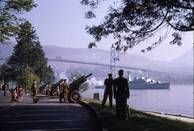 This Week: The Regiment has fired many, many salutes over the years. Regretfully, we have photo documentation of this only going back to the late 1940s. However, research continues. As would be expected, photos begin to become far more plentiful in the 1960s, with the introduction of point-and-shoot cameras with cartridge film (remember 110 Instamatics?). Regretfully, some of these films, combined with cheap plastic lenses and rock-hard shutters made for horribly fuzzy images. Kodachrome, however, usually delivered the goods (and this is no advert, as the film hasn’t been produced for years, with Kodak going into receivership). This week’s shot is no exception. It was taken in 1968, judging from the date on the slide frame. The location, in Stanley Park, just east of the perimeter road rising to meet Lion’s Gate Bridge, is unchanged today. However, the uniforms have changed, and along with starch, Brasso and weights, becoming items of the past. The salute is obviously being given to a visiting naval vessel. However, our untrained, land-based eyes cannot distinguish between a ketch and a container ship. So, dear nautical readers, the question is, “What ship is this?” Answers may be sent to the editor of this auspicious journal, or to the humble writer, John Redmond ([email protected]). Thank you, mateys! From the ‘Punitentary’ What do you get if you cross a clock and a steer? Minute steaks. Murphy’s other Laws Never assume conspiracy when stupidity is an adequate explanation. Quotable Quotes Expert: a man who makes three correct guesses consecutively. Laurence J Peter CIC Vancouver and the Royal United Services Institute present a Panel Discussion Canada’s Foreign Policy and the Federal Election 2015 with Dr. James A. Boutilier Dr. Michael Byers Ms. Jill Stirk Following a LIVE SCREENING of the MUNK DEBATES  Dr. James A. Boutilier Special Advisor, International Engagement Maritime Forces Pacific Headquarters Dr. James Boutilier is the Special Advisor, International Engagement at Maritime Forces Pacific Headquarters, Canada’s west coast naval formation, in Esquimalt, British Columbia. Dr. Boutilier attended Dalhousie University (BA History, 1960), McMaster University (MA History, 1962), and the University of London (PhD History, 1969). Dr. Boutilier has held posts at various universities throughout his career, including the University of the South Pacific in Suva, Fiji, Royal Roads Military College in Victoria, British Columbia and the University of Victoria. Dr. Boutilier’s field of expertise is Asia-Pacific defence and security. He published RCN in Retrospect in 1982 and has written extensively on maritime and security concerns. He lectures nationally and internationally on political, economic, and global security developments.  Dr. Michael Byers Canada Research Chair in Global Politics and International Law, University of British Columbia Michael Byers holds the Canada Research Chair in Global Politics and International Law at the University of British Columbia. He has been a Fellow of Jesus College, Oxford University, a Professor of Law at Duke University, and a Visiting Professor at the universities of Cape Town, Tel Aviv, Nordland (Norway) and Novosibirsk (Russia). Professor Byers is a regular contributor to the Globe and Mail and the National Post. His most recent book, International Law and the Arctic, won the 2013 Donner Prize for the best public policy book in Canada.  Ms. Jillian Stirk Former Ambassador to Norway, Head of the Afghanistan Inter-Department Committee; Assistant Deputy Minister for Europe and Africa in DFATD Jillian Stirk is a former Canadian ambassador and Public Service executive with more than thirty years experience in public policy, foreign affairs, international trade, and multinational negotiations. Until June 2013, Jillian was the Chief Foreign Policy Officer and Assistant Deputy Minister-Strategic Policy, Global Issues, and European Affairs at the Department of Foreign Affairs, International Trade, and Development. Jillian served as Canada’s Ambassador to Norway from 2005-2009. Jillian is a Dialogue Associate at the Simon Fraser University Centre for Dialogue and a Mentor with the Pierre Elliott Trudeau Foundation, where she is co-leading a project on Diversity, Pluralism and the Future of Citizenship. She currently sits on the Advisory Board of the Allam Advisory Group, a global trade consulting firm and she is also a member of the Board of Trustees of the West Vancouver Memorial Library. She volunteers with the Minerva Foundation for BC Women, and with several other academic and community organisations. MEET OUR MODERATOR 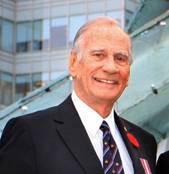 Cameron Cathart President, Royal United Services Institute (RUSI) of Vancouver Cameron Cathcart is a former broadcast journalist with a career spanning 40 years, including 30 years with the CBC as foreign correspondent in Washington, parliamentary reporter in Ottawa, national correspondent in Canada, executive producer, and on-air presenter for the CBC radio and television networks. Following early retirement Mr. Cathcart became an active volunteer. In July 2015 he was recognized by the City of Vancouver with the 2015 Civic Merit Award for his leadership of the annual Remembrance Day Service at Victory Square which has become one of the largest and most respected ceremonies of its kind in Canada In 2012 he received the Queen Elizabeth II Diamond Jubilee Medal for “dedicated service to his peers, the community and to Canada” and in 2009 was awarded the prestigious Minister of Veterans Affairs Commendation for promoting awareness of veteran’s issues in Canada. September 5, 2015 Dear Friends, The Chinese Canadian Military Museum is the only museum of its kind in Canada. Our goal is to collect, preserve, document, and celebrate the role of Chinese Canadian veterans in the service of Canada’s military. Our emphasis over the past 15 years had been on educating Canadians on the role Chinese Canadians played during the Second World War, and the double victory that was won as a result of their sacrifice. Not only did Chinese Canadians play a role in the victory of the Allies over fascism in 1945; they also improved the lives of all Chinese Canadians when, in 1947, the federal government finally granted the community full citizenship and the right to vote. Today, we have only a small number of Canadian veterans from this war still with us. Many are active in our museum. All are in their 90s. This year also marks the 70th anniversary of the end of the Second World War. It is a milestone year that we need to commemorate. Sadly, we recognize this is one of our last opportunities to honour as many of the few remaining World War II veterans still alive. To this end, our museum is hosting a 70th Anniversary Commemorative Gala dinner on Saturday, October 24, 2015 in Vancouver. This is the year, and the occasion, to really honour the veterans that are left by hosting the most amazing gala commemorative dinner for them with an outstanding, distinguished Canadian in attendance. To make this year truly special, we have invited Lieutenant General (Ret’d), the Honourable Romeo Dallaire and he has accepted to be our keynote speaker for the evening. He is a former soldier and Canadian senator. And he is a man who, due to his time in Rwanda as a peacekeeper, speaks passionately about conflict, resolution, compassion … and forgiveness. Although he is a high profile speaker, he does not take any money for himself. However, he does use his speaking fees to raise money for his humanitarian work – specifically his mission to end the use of child soldiers. All money goes to his foundation, and he is selective as to what speaking engagements he accepts. Your support by attending this dinner will help us to raise money not only for our museum but also for LGen Dallaire’s foundation. The museum is promoting this event to all the military regimental associations, Army, Navy and Air Force Veterans (ANAVETs) units, Royal Canadian Legions (RCL) branches and local militia units and reserves. We hope that you will join us at this momentous occasion to pay tribute to these war heroes. If you also wish to donate to the museum, we are able to issue tax receipts for your contribution to help us carry on with the stories and legacies of these veterans. Please use the attached form to order your tickets and do share this invitation to your family, friends and colleagues at work and clubs. I look forward to seeing you at the dinner. Thank you for your support of our veterans. Sincerely King Wan President Attach 15th Field Artillery Regt Seeking Recruits
Primary Reserve Artillery Information Session Monday October 19th, 2015 @ 6:00 P.M and Monday October 26th, 2015 @ 6:00 P.M Those interested in applying to the Canadian Armed Forces Primary Reserves are welcome to attend a one-hour information session as a first step in the recruitment process. These sessions will include information on career availability, benefits, training, and more. Registration is mandatory for all information sessions 2025 West 11th Ave, Vancouver BC To register, call 604-666-4371 or email [email protected] Be sure to include the following information: · Your name and address · Phone number (home, work, cell) · Email address · Date and time of presentation |
Archives
June 2024
|

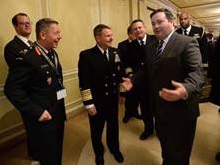
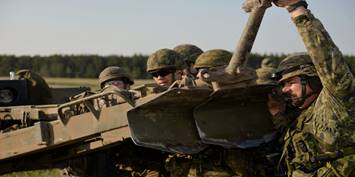
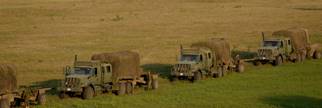


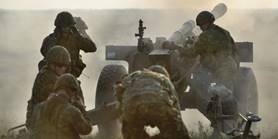



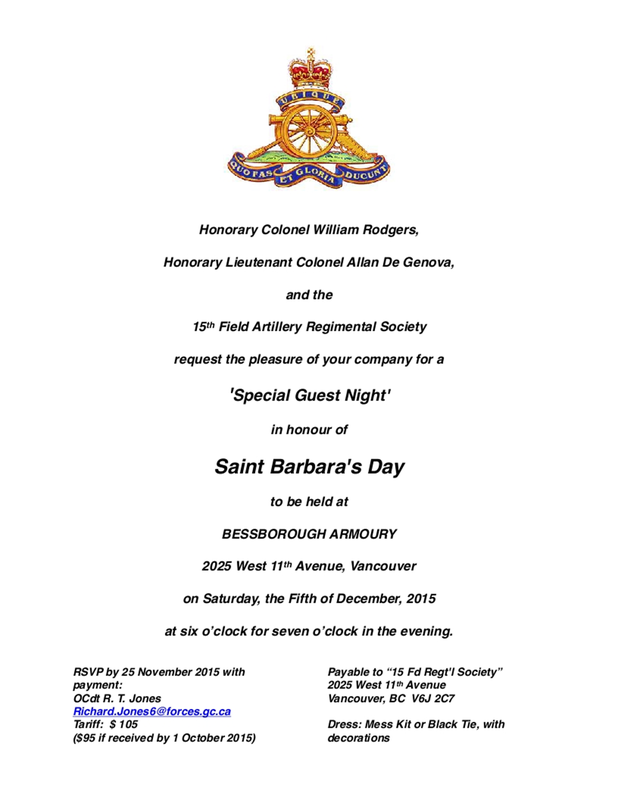
 RSS Feed
RSS Feed